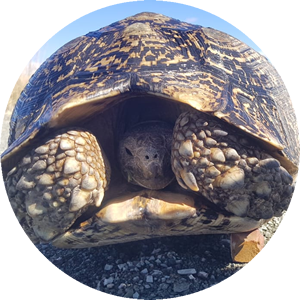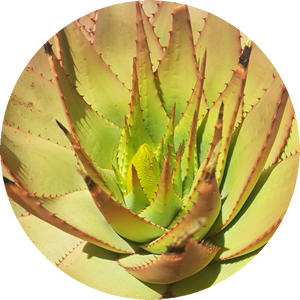Publications and Articles
Critically endangered (previously considered extinct) and rare localized endemic plant species; recorded for the first time since 1967 while conducting a monitoring survey within the Nelson Mandela Bay area.
Selago polycephala is a cryptic, rare localized endemic species of the Scrophulariaceae family of plants. It is listed as Critically Endangered (Possibly Extinct) and has not been recorded since 1967 and was presumed extinct until a recently when a population was recorded by CES botanist, Luc Strydom, while conducting a monitoring survey within the Nelson Mandela Bay area. Records of this nature are extremely valuable, and contribute to further understanding the sensitivity of our local biodiversity as well as strengthening the set of biodiversity data available for development planning.
Photos courtesy: CES botanist and Principal Ecologist, Luc Strydom
Veld & Flora Article: Jachtvlakte
Keen-eyed botanists have been finding hidden treasures in an unassuming patch of grey-green shrubs in the heart of Nelson Mandela Bay for at least 250 years
Six new species of Ruschieae (Aizoaceae)
Recent fieldwork in the Cape Provinces of South Africa, led to the discovery of six new species, which belong to the large and diverse tribe Ruschieae (Ruschioideae, Aizoaceae). These new species form part of a larger study, also involving analyses of molecular data, which aims to clarify which species belong to the various subgenera recognized within Ruschia Schwantes. It also aims to investigate the relationships between these subgenera as well as their relationships to the rest of the Ruschieae. The description of these new species will make names available for use in this phylogenetic study (Klak et al., in prep.).
Cited as an author for new species; Luc Strydom: Lamprnathus umbraticola sp. nov.
Formal name = Lampranthus umbraticola Klak & Strydom.
Published in Journal of South African Botany 156 (2023) p152-153.
The scientific community accepts marram grass to be non-invasive in dune stabilisation in the Cape
For more than three decades, botanists and dune ecologists in the Department of Botany at Rhodes University have spent over 20 000 people-hours researching marram grass. Because of the invasive nature of the plant in Australasia and North America, the plant was long thought to be invasive in the Cape. It has been concluded that the species is non-invasive so long as the variety present in the Cape is used and no new material is introduced. Despite this evidence, the authorities list marram grass as a Category 2 species of weed which may only be grown under permitted conditions in demarcated areas. In order to obtain a permit to use the grass in a large stabilisation project at Hout Bay, a detailed study was reinitiated on the distribution of marram grass 20 years after the original studies on its distribution had been completed. These results confirmed results of the previous studies that the grass was non-invasive. These findings were ratified in a peer-reviewed research paper published recently in a special issue on ‘Dynamics and Stability of Plant Communities in Coastal Sand Dunes’ of the open access journal Plants (Lubke; Plants 2022;11(17), Art. #2260). Finally, marram grass, as it occurs on our Cape dunes, may be accepted as a useful pioneer and dune stabiliser. No indigenous species are capable of performing the same process.
We congratulate the Business Unit Head II of CES – Environmental and Social Advisory Services, Dr Anthony Mark Avis and Prof Roy Lubke as an associate, as authors of this publication.

Dr Anthony Mark Avis
Dr Avis, conducted a survey of the coastal zone of the Eastern Cape as a local Eastern Cape PhD student, in the 1980s. He is based at the CES Cape Town Branch.
BranchSouth African Journal of Science
Published: 31 January 2023
Trichodiadema stayneri was recently recorded by environmental consultant and botanist, Luc Strydom
Trichodiadema stayneri L. Bolus is a rare succulent that is listed as Critically Endangered – Possibly Extinct on SANBI’s Red List database. This is due to a single collection, by Mr. Frank Stayner (former curator of the Karoo National Botanical Gardens) in 1960 from an area detailed as “2 miles east of Uitenhage”. It is presumed that this area has been lost to the expansion of Uitenhage, and therefore considered possibly extinct. Trichodiadema are a genus of plants in the Aizoaceae family of plants, and are often locally referred to as “vygies”. The name Trichodiadema comes from the ancient Greek “trikhos” (hair,bristle) and “diadem” (crown) because of their unique leaves which are tipped with radiating hairs.
Trichodiadema stayneri was however recently recorded by environmental consultant and botanist, Luc Strydom, within the Jachtvlakte area between Kariega (Uitenhage), Despatch and Gqeberha (Port Elizabeth). This is the first time the plant has been recorded for over 60 years. Fieldwork generated data from private ecological assessments can not only assist developers in making better-informed decisions, but can also add valuable ecological input for our national biodiversity databases.
Ecology and Evolution: Where are the seeds?
Lack of floral morphs prevent seed production by the tristylous Pontederia cordata in South AfricaAbstract
Reproduction is a crucial part of the successful establishment and spread of an invasive species. Invasive plants often produce seeds prolifically to spread into new ranges, yet the invasive macrophyte, Pontederia cordata L., does not appear to produce seeds in South Africa, limiting its invasive potential. Here, we aimed to determine what limits seed production of the tristylous P. cordata in South Africa, where it is widespread with impacts on the ecology of wetlands it invades, South Africa. We measured floral traits and pollen grain size from populations throughout the invasive range in South Africa to determine the relative proportion of tristylous morphs. We speculated that the absence of specialist native pollinators in the invasive range may be responsible for the absence of sexual reproduction and thus conducted a pollination study to determine whether flowers were visited. Thereafter, we hand pollinated 8865 flowers to conclude whether P. cordata exhibited an incompatibility system, which prevented seed production. The floral traits and pollen grain measurements were similar to those reported for short-morphed flowers from the native range. The pollination study confirmed the absence of specialist insect visitors, while the hand-pollination experiments resulted in no seed production. Only short-morphed plants are present in South Africa, and the illegitimate pollination of short-morphed plants prevents seed production. Vegetative spread through rhizome production is thus responsible for the invasion of P. cordata throughout South Africa. These findings suggest that control programs should target the plants' rhizomes to prevent and reduce spread. More importantly, preventing the introduction of medium-and long-morphed plants into South Africa is crucial to preclude P. cordata from producing seeds and
enhancing invasion.
Disaster Management Policy : Journal of Environmental Health • Volume 78, Number 7
Kindly contact the publisher for a copy of the full article.
Reference
Hoossein, S., Tandlich, R., Whittington-Jones, K.J., Launscher, R., Madikazela, P. &. Zuma, B.M. 2016. Disaster Management Policy Options to Address the Sanitation Challenges of South Africa. Journal of Environmental Health, 78(7): E1-E7.
Abstract
The current population of South Africa has been migrating into informal urban settlements that lack adequate sanitation service delivery, caused at least in part by the lack of the necessary skills in the local government sector and the lack of buy in from the community into the provided sanitation facilities. The authors report results of policy research into the relevant disaster management options that could be applied to improve the sanitation service delivery in South Africa. The best policy option was identified as the draft Disaster Management Regulations: Disaster Management. Local government can use these tools through the formation of the volunteer units from the nongovernmental organization sector, the business community, and from among the end users of sanitation facilities. Formation of the volunteer unit should follow the principles of cooperative governance and participatory approach to disaster management. Implementation should be facilitated through the adoption of locally specific municipal bylaws.
Disaster Management Policy : Journal of Environmental Health • Volume 78, Number 7
Kindly contact the publisher for a copy of the full article.
Reference
Hoossein, S., Tandlich, R., Whittington-Jones, K.J., Launscher, R., Madikazela, P. &. Zuma, B.M. 2016. Disaster Management Policy Options to Address the Sanitation Challenges of South Africa. Journal of Environmental Health, 78(7): E1-E7.
Abstract
The current population of South Africa has been migrating into informal urban settlements that lack adequate sanitation service delivery, caused at least in part by the lack of the necessary skills in the local government sector and the lack of buy in from the community into the provided sanitation facilities. The authors report results of policy research into the relevant disaster management options that could be applied to improve the sanitation service delivery in South Africa. The best policy option was identified as the draft Disaster Management Regulations: Disaster Management. Local government can use these tools through the formation of the volunteer units from the nongovernmental organization sector, the business community, and from among the end users of sanitation facilities. Formation of the volunteer unit should follow the principles of cooperative governance and participatory approach to disaster management. Implementation should be facilitated through the adoption of locally specific municipal bylaws.
Discovery of a new tree species, Icuria dunensis, in coastal Mozambique
read more:














